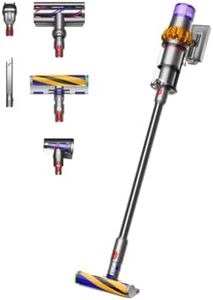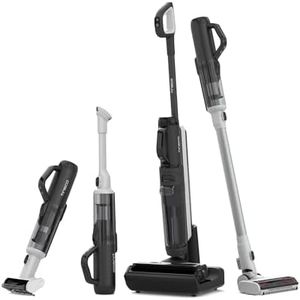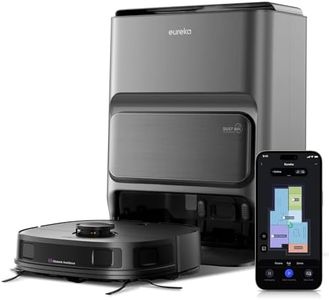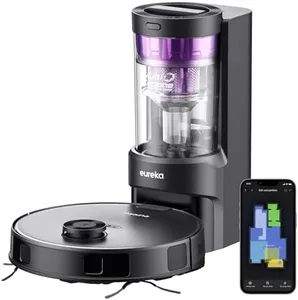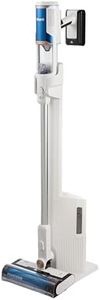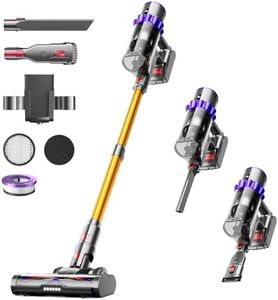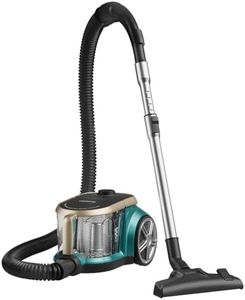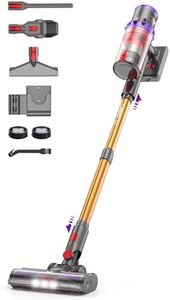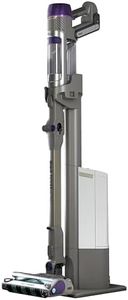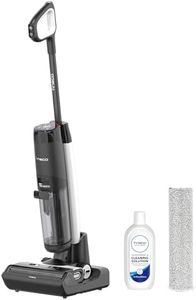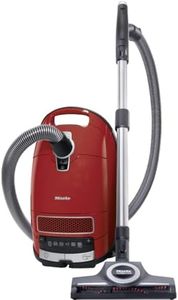We Use CookiesWe use cookies to enhance the security, performance,
functionality and for analytical and promotional activities. By continuing to browse this site you
are agreeing to our privacy policy
10 Best Apartment Vacuum Cleaners
From leading brands and best sellers available on the web.Buying Guide for the Best Apartment Vacuum Cleaners
Choosing the best vacuum cleaner for your apartment involves thinking about your living space, your cleaning habits, and the specific needs you have—like pet hair, allergies, or the types of floors in your home. The ideal vacuum cleaner should be easy to handle and store, yet powerful enough to handle everyday messes. Considering the right features can make cleaning less of a chore and more efficient.Type (Upright, Stick, Canister, Handheld, Robot)The type of vacuum cleaner affects its size, shape, and how you use it. Upright vacuums tend to be more powerful and good for larger areas but can be bulkier. Canister vacuums are versatile and often quieter, while stick vacuums are lightweight and easy to store—ideal for apartments with limited space. Handhelds are perfect for spot cleaning or furniture. Robot vacuums offer convenience and work autonomously but may not clean as deeply. To pick, consider your storage space, the surfaces you clean, and your preferred way to clean.
Suction PowerSuction power indicates how effectively the vacuum can pick up dirt and debris. Higher suction is important for deep cleaning and carpets, while lower suction may be enough for hard floors. Vacuum manufacturers describe this differently—sometimes in watts, air watts, or simply as low/medium/high power levels. For most apartments, a medium level of suction power is a good balance; only pick high suction if you have thick carpets or lots of pet hair.
Weight and SizeWeight and size determine how easy it is to use and store the vacuum. Small, lightweight models are easier to move around and fit in closets, making them suitable for apartments. Heavier or bulkier vacuums may provide more power but can be harder to maneuver or find space for. Think about how much effort you want to spend carrying the vacuum and whether you'll need to store it in a tight spot.
Dustbin or Bag CapacityThis tells you how much dust, dirt, and debris the vacuum can hold before it needs emptying. Smaller capacities mean you'll empty it more often, which is not a big problem for small apartments with light cleaning needs. If you have pets or a large apartment, look for something with a bigger bin to reduce emptying frequency.
Filtration System (HEPA and others)The filtration system traps dust and allergens inside the vacuum rather than releasing them back into the air. HEPA filters are best for people with allergies or asthma because they capture very fine particles. Non-HEPA filters may be enough if allergies are not a concern. Choose a filter based on how sensitive you or your family are to dust and allergens.
Noise LevelNoise level matters, especially in apartments where you might share walls with neighbors. Quieter vacuums will generally have decibel ratings listed. If you prefer to clean at any time without disturbing others, look for models with a lower noise output.
Corded vs. CordlessCorded vacuums offer unlimited runtime but are limited by the length of the power cord, while cordless vacuums provide more flexibility and ease of movement at the cost of battery life. For smaller apartments, cordless models are often enough to clean the whole space on a single charge. Consider how much time you usually spend cleaning at one go and whether convenient movement or unlimited time is more important for you.
Accessories and AttachmentsDifferent vacuums come with tools like crevice tools, upholstery brushes, or motorized pet tools. These attachments make it easier to clean furniture, tight spaces, or pet hair. Decide which attachments you'll actually use based on your apartment's layout and your lifestyle (for example, having pets or lots of furniture).
